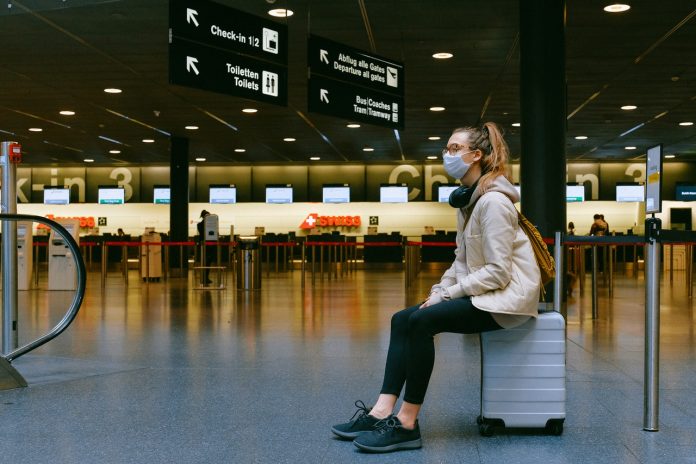All your plans to travel this summer, explore new places, and live your life to the fullest were shattered due to the sudden onset of the COVID-19 outbreak. While the number of positive cases is still accelerating at a quick pace, the world is returning to normal. Several countries have eased travel restrictions, so now, you can chase your wanderlust instincts.
But is it yet safe to travel? If not, then how can you ensure your safety while traveling? Let’s find out.
Table of Contents
Is it safe to travel during the coronavirus outbreak?
If you’re looking for a quick answer, it’s unfortunately ‘NO.’ The number of cases across the globe is rising exponentially, and you are at risk of getting infected as soon as you step out of your house. But that doesn’t mean you should completely cut down travel. Some countries like Canada and EU nations have eased travel restrictions. However, here are a few things to consider before you travel abroad:
Your age: Elderly people are at a higher risk of suffering from serious COVID-19 complications. While the chance of infection is the same for all age groups, people of ages 10-39 have shown a relatively low fatality rate (0.2%). So, if there’s a senior in your family, make sure they don’t travel with you.
Your medical history: Those with underlying medical conditions are more susceptible to becoming critically ill from the coronavirus. If you suffer or have a medical history of any respiratory disease, health disease, or any other medical condition, avoid traveling.
The country you visit: More than 10.5 million coronavirus cases have been reported across the world to date. However, not all countries are affected in the same way. For instance, the USA, Brazil, Russia, India, and the UK are the worst affected, with a collective total of more than 5.5 million positive cases.
On the other hand, small countries and islands like Anguilla, British Virgin Islands, Papua New Guinea, and Vatican City have each reported less than 15 positive cases. So, these countries are comparatively safer to visit. Not that the latter bunch of countries is completely safe, but your chances of coming in contact with infected people are less.
Some travel safety tips to follow
After considering all the permutations and combinations, you’ve finally made your mind to travel. But when you travel, safety should be your paramount concern. There are a few measures you can take that would reduce your risk of getting the COVID-19.
Create an inventory list
This could be fun, right? Travel packing is one of the most exciting things to do before taking off. But unfortunately, things have changed. Now, there are a few items you should carry with you while traveling. These include an alcohol-based hand sanitizer (60%), disinfectant wipes, tissues, and a face mask. These items would help you maintain a certain level of hygiene and prevent contact from infected areas.
But once you’ve kept these essentials, let the fun begin. Put in everything that can make your travel experience enjoyable – camera, earplugs, portable batteries, etc.
Be careful of what you touch
The COVID-19 causing virus particles can be anywhere. It can be on the handle of your taxi, your airplane seat, or the ATM at the airport. Thus, it is critical to always maintain a high sense of caution. Be mindful of what you touch, especially surfaces that are frequently used, such as check-in machines, escalators, ATMs, etc. If you want to touch any of these surfaces, use a good amount of sanitizer after you’re done. And don’t ever touch your face, nose, or eyes.
In addition, be watchful of your own high-touch items, like wallets and phones. It’s better to keep them in your bag rather than exposing them to bins during security checks. Since your phone is probably your most-used item, wipe it down with a disinfectant a few times a day.
Minimize human contact
Avoid human contact whenever possible. Get your boarding pass from the machine instead of waiting in the line and getting it manually from the desk executive. Also, don’t forget to wash your hands after getting your boarding pass from the machine. In cases where you have to stay amid people, maintain the recommended six-feet distance. When it comes to paying for food or services, prefer contactless options instead of cash or card.
Opt for the window seat
Clouds are important, aren’t they? But this time, it ain’t about the clouds. Research suggests that sitting at a window seat for the course of the flight is the best way to avoid germs on a place. Infected passengers are not likely to infect people sitting two seats farther or more from them. While choosing a window seat on a plane might not be in your hands, always opt for the window if you can.
Wipe your surroundings
Isn’t it the job of the cleaning staff to keep the airplane clean and hygienic? Well, it is, and they’re doing their best to ensure passenger safety. But there are a few measures you should take at your end to alleviate your chances of getting infected.
When taking a seat, do a quick scrub of the hard surfaces around you with disinfectant wipes. These areas include the back of the seat in front of you, the tray table, the seat flap, the armrests, and the window glass. However, don’t use wipes on soft surfaces as it can ruin the material.
In addition, keep in mind that the coronavirus will not directly infect you from such surfaces. It’ll only happen if you touch these areas and then touch your face, nose, or eyes. And this applies to your belongings, such as mobile phones and wallets as well. So, your best bet is not to touch your face when traveling. But if you need to do, use a good amount of sanitizer to avoid direct contact.
Don’t drink water from public sources
The US Environmental Protection Agency suggests that water from airplane tanks is not always clean. So, it’s a good idea to avoid drinking such water, or tea or coffee during your flight, which is usually made from this water. When traveling, always carry bottled water with you.
Wear a mask
There are ongoing debates on whether a mask is helpful in combating COVID-19 or not. But if you’re traveling, you don’t want to leave any doors open. So, make sure to get a good-quality mask for your trip. Avoid relying on cheap-quality surgical masks, and go for N-95 masks that are proven to stop air droplets. To get your own high-quality masks made in the USA, visit Primodentalproducts.
Don’t travel if you have symptoms
More often than not, we look for ways to protect ourselves from the disease. But what if you’re infected? There’s clear evidence that many COVID-19 positive people may not experience any symptoms at all. But they’ll still transmit the disease and continue to infect other people. So, if you’re experiencing cough, fever, or cold, you should avoid traveling. The CDC recommends waiting for at least 24 hours after the fever has completely subsided before stepping out.
Conclusion
Let’s face it, traveling is not yet safe, and if you step out, you’re at the risk of getting infected. But there are a few apparent precautions you can take to enjoy your travel to the fullest without getting sick.



















